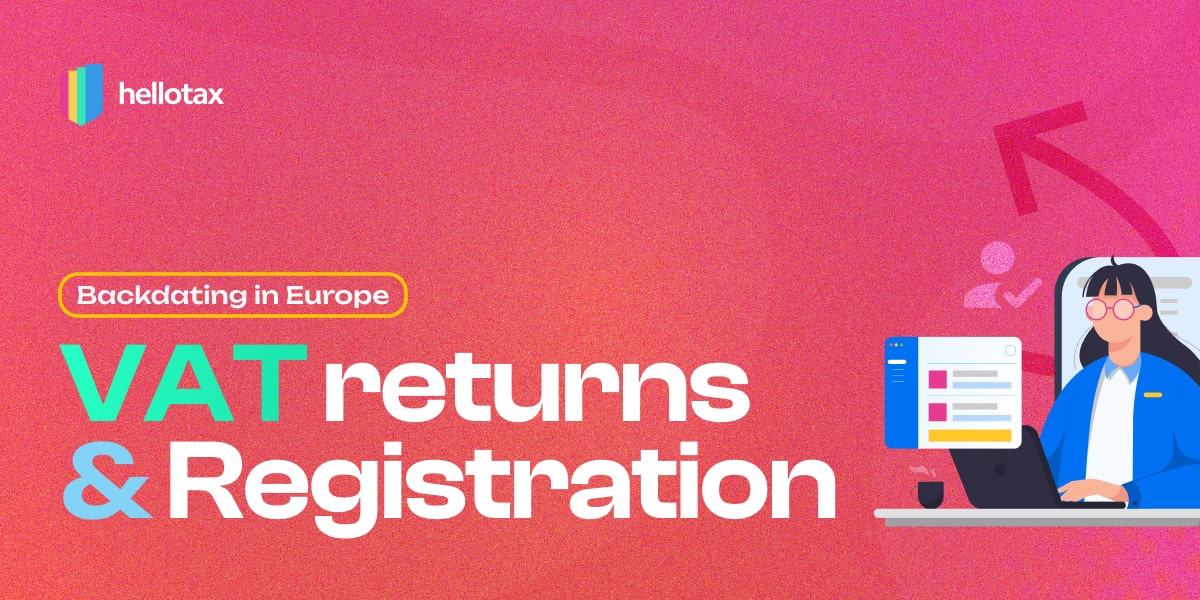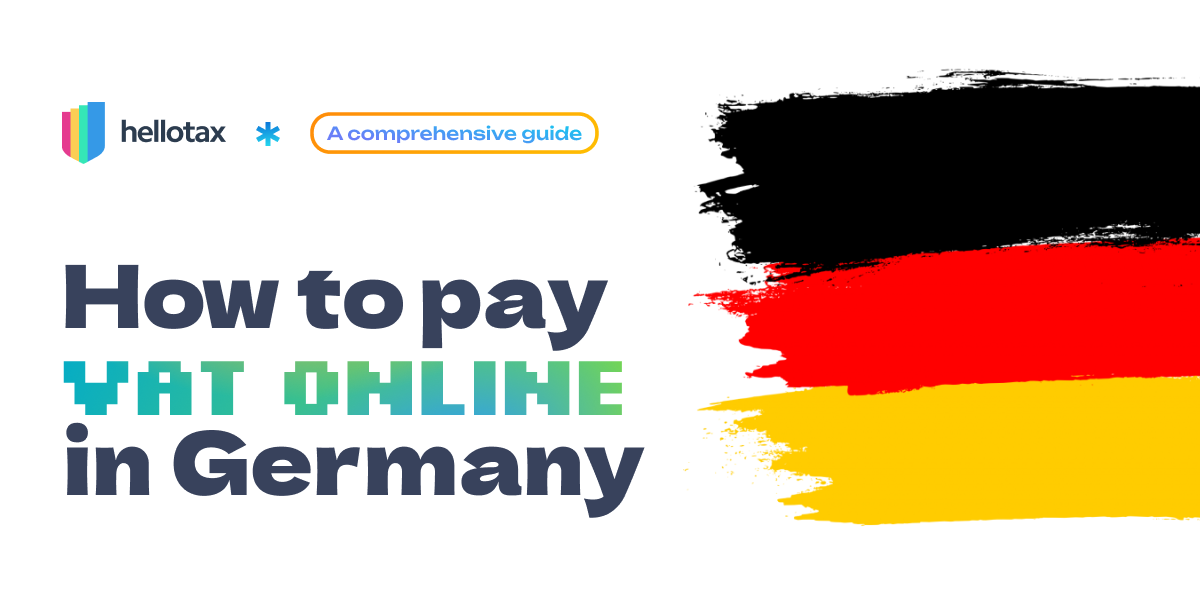Online retailers who have registered for the One-Stop-Shop must regularly submit OSS reports in the country of registration. Here you can find out what needs to be taken into account and how the submission of the report works in Germany.
Antonia Klatt
Last Updated on 10 January 2022
What is a One-Stop-Shop report?
As soon as a registration for the One Stop Shop in Germany is active, OSS reports must be submitted there regularly. These correspond to the VAT returns that are required when a VAT registration exists. Although it was only possible to submit reports manually at the beginning, in most countries it has only been possible to submit reports for the OSS procedure electronically since the end of 2021. For this purpose, separate online portals are usually used in European countries, in the case of Germany the BOP portal of the Federal Central Tax Office.
When do I need to submit a One-Stop-Shop report?
The One-Stop-Shop reports are due quarterly and must be submitted by the end of the month following the end of the tax period (calendar quarter). In general, the following dates apply:
- Submission of the OSS report for the 1st quarter by April 30th
- Submission of the OSS report for the 2nd quarter by July 31st
- Submission of the OSS report for the 3rd quarter by October 31st
- Submission of the OSS report for the 4th quarter by January 31 of the following year
Submission is always mandatory. Even if a retailer does not report any sales that fall into the OSS program in a quarter, a so-called “zero report” must be submitted.

Hellotax One-Stop-Shop Solution
- Automated identification of B2C sales
- Automated determination of your tax rates
- Handling of OSS registrations and reports
- Quality control for your transactions
What must be included in the OSS return?
In the OSS reports, all combinations of the Member State of consumption, i.e. the country to which the VAT is owed, the country of departure, i.e. the state from which the goods were delivered, and the applicable VAT rate must be specified separately. On our blog we have put together some One-Stop-Shop examples for differing countries of origin and consumption for you.
Instruction for OSS return submissions
The introduction of the One Stop Shop has changed a lot – also in terms of submitting returns and reports. Here we explain step by step how you can submit your OSS report.
Step 1: Login & Authentication
In the first step you have to log into the BOP portal. To do this, you need your certificate file and your log-in password. You should have received both when registering for the One Stop Shop at the latest.
First you click on “Jetzt einloggen”, then you upload the certificate file in pdf format in the input field and enter your password.
Step 2: Select the “Steuererklärung für OSS” form
You will then need to find the correct online form for submitting OSS reports. You can find this under the tab “Formulare & Leistungen”.
Then click on “Alle Formulare”, “Steuer-International” and finally “One-Stop-Shop (OSS) für in der EU ansässige Unternehmer – EU-Regelung (vormals Mini-One-Stop-Shop)”. The correct form is currently called “Steuererklärung für die OSS EU-Regelung”..
Step 3: Enter the basic data
After you have clicked on the form and read the data protection information, you have to enter your German VAT identification number (VAT ID) WITHOUT the German country code. The entered identification number therefore only consists of a series of numbers.
You can then select the tax period for which you want to submit the OSS report. You can also indicate whether you want to submit a zero report because you did not generate any taxable sales in the specified tax period, or whether you want to continue with the VAT return.
Step 4: Deliveries of goods from within Germany
Now it’s time to enter the data. First of comes the data of the deliveries of goods from within Germany, i.e. from transactions and deliveries that were made from Germany to other EU countries. Each EU country to which products have been delivered must be treated separately.
Click on “Weitere Daten hinzufügen” and then select the first sales country as the country of consumption. You then have to provide the following information for the transactions in this country of consumption:
- VAT type (reduced or standard)
- VAT rate
- Net amount of relevant sales
- Corresponding VAT amount for “Abweichender Umsatzsteuerbetrag” if it deviates from the calculated VAT amount
Then you end the entry by clicking on “Eintrag Übernehmen” and you can check it in the following table.
Please note that you have to create a separate entry via “Weitere Daten hinzufügen” for each country to which you deliver goods. The summary table must therefore contain a separate line for each country.
Step 5: Transactions with different VAT rates
The VAT rates differ not only between the individual countries of consumption, but also on a national level. For transactions that are subject to reduced tax rates, separate entries must be made.
Example: A German online retailer sells and sends books, decorative plants and household goods to French customers. These are considered cross-border distance sales and are subject to the OSS program. The regular French VAT rate of 20% applies only to household goods. Books, on the other hand, are taxed at 10% and decorative plants at 5.5%. In the German OSS report, distance sales of books, decorative plants and household goods to France must be reported separately and the table therefore contains three entries for distance sales to France.
Step 6: Deliveries of goods from abroad
If you only deliver goods from your home country, you are almost done with submitting the OSS report. However, if you operate a permanent establishment in another EU country or store your goods in a foreign warehouse, for example as part of an FBA program, you have to make further entries.
To do this, click on the “Umsätze für aus anderen Mitgliedstaaten durchgeführte Warenlieferungen” category and on “Weitere Daten hinzufügen”. Then you choose whether the goods have been delivered by a facility that is assigned to you or by the operator of an electronic interface (e.g. FBA from Amazon).
Then enter the following information:
- the country of the start of the delivery of goods, i.e. the country of the warehouse
- the VAT identification number with the country code of the permanent establishment, if you have a permanent establishment there
- the tax number, if no VAT ID is available
It should be noted that under OSS, a VAT registration must exist in the countries in which you store goods.
Then you can add entries as usual. Again, the VAT type, VAT rate and net amount must be specified. There must also again be one entry for each VAT rate. This means that sales of products that are subject to local reduced tax rates must be entered separately.
Step 7: Final review and submission of the One-Stop-Shop return
Data entry is now complete. You can check your sales again and then end the submission of the One Stop Shop report by confirming the results and clicking on “Absenden”. Of course, the report can also be checked retrospectively and corrected if necessary. The payment of the entire VAT liability, just like the submission of the form, must have been finished by the submission deadline.
Sounds complicated? Do not worry! The self-developed software from hellotax can save you a lot of work when submitting One-Stop-Shop reports. The software sorts all transactions, recognizes VAT rates automatically, and compiles OSS reports independently, which contain the storage and consumption country combinations separately and therefore significantly simplify the submission of OSS returns. Furthermore, our hellotax team of tax consultants and local experts can take care of the OSS registration and the submission of OSS reports in the BOP portal. Contact us today, discuss your options with us and find out more about our offers.

Book a free consultation
Our VAT experts are happy to help you. Book a free consultation today!



